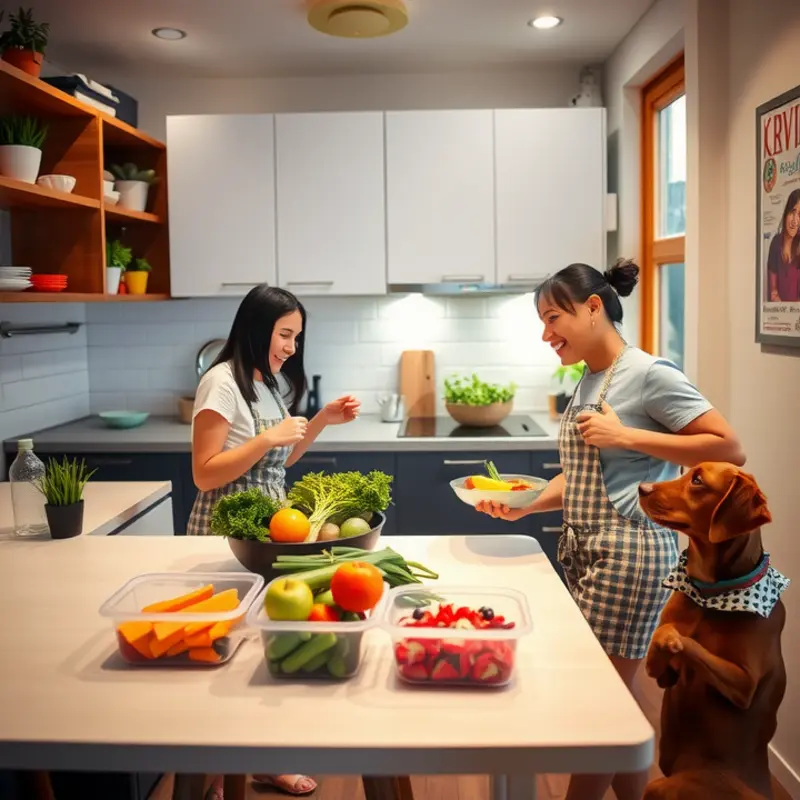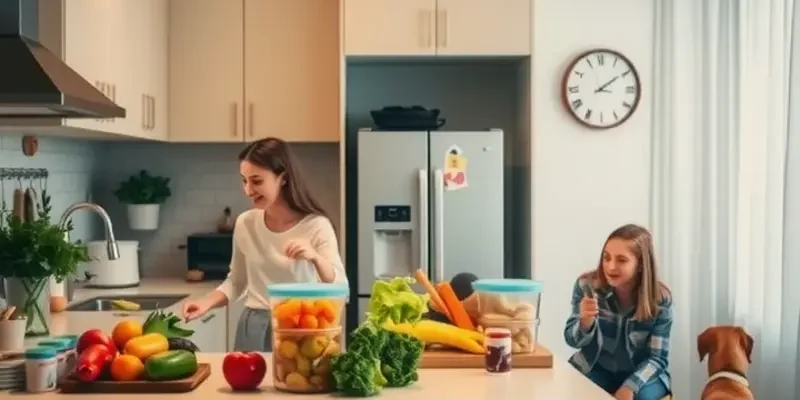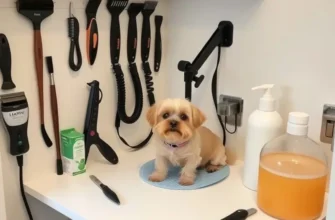Navigating meal prep in apartments can be a delightful and efficient experience for families, pet owners, and couples. With the right planning, you can make the most of your kitchen space, create nutritious meals on a budget, and enjoy quality time with loved ones—all without feeling cramped. A family meal prep system is not just about feeding everyone; it’s about creating an atmosphere where pet and human alike can thrive in a comfortable, safe environment. By focusing on practical strategies, you can make every meal time special, minimize stress, and keep your apartment a peaceful haven for everyone. This guide provides actionable steps to streamline your meal prep, ensuring it’s feasible and friendly for both children and pets. Get ready to explore how to organize your kitchen effectively, find family-approved recipes, and make meal prep a bonding activity rather than a chore.
Crafting Your Meal Prep Plan

Creating a meal prep routine in the cozy confines of your apartment involves a harmonious blend of organization and practicality. Start by assessing your available space. Identify clear zones for ingredients, cookware, and storage to avoid chaos during the cooking process. Small kitchen spaces can still be highly efficient if you prioritize using vertical storage solutions like hooks or wall-mounted racks. For more tips on maximizing storage, consider checking out apartment organization ideas.
Selecting Recipes
Focus on recipes suited to your apartment’s kitchen setup and equipment. Opt for one-pot dishes or oven bakes that minimize cleanup and utensils. If your kitchen lacks heavy-duty appliances, lean toward stovetop recipes or no-bake options. Dishes with overlapping ingredients can make prep smoother and faster, such as using chicken in both a stir-fry and a soup.
Incorporating Pet Meals
Pets are family, and their dietary needs should integrate seamlessly into your plan. If you’re making home-cooked meals for your pets, choose recipes that overlap ingredients with your meal prep to save time. For example, if you prepare a chicken and veggie meal for yourself, reserve portions for your pet without seasoning that might be harmful to them. Always consult with your vet to ensure recipes meet your pet’s nutritional requirements.
Organizing Ingredients
Keep your pantry organized by grouping staples together. Store grains, dried goods, and pet food separately but within easy reach. Labeling containers helps ensure everyone in the family can find what they need and helps prevent accidental use of pet products for human meals.
Scheduling Your Prep Day
Dedicate a time each week for meal prep that does not disrupt your daily schedule. Sunday afternoons can be ideal as it sets you up for the week ahead. Involve family members in the process. Assign simple tasks to children, transforming meal prep into a family activity.
Utilizing Kitchen Space Effectively
Limited counter space? Clear your countertops before meal prep begins. Put away unnecessary appliances and items to maximize your prepping area. If you’re balancing meals for both humans and pets, designate a specific workspace for pet food to prevent cross-contamination.
Adapting for Couples
For couples, tailoring meal prep to factor in dietary preferences and restrictions is key. Emphasize easy-to-adapt base recipes that can cater to different tastes by adding or omitting ingredients post-cooking.
Implementing this routine will help create a cohesive and efficient meal prep plan that’s adapted not only to your kitchen but also to your living space. Crafting your meals this way ensures tranquility reigns in your apartment kitchen, amidst the hustle of family and fur companions.
Engaging Kids and Pets in Family Meal Prep

Creating a family-friendly kitchen not only means organizing your space effectively but also involves fostering an environment that encourages involvement from all members of your household. Engaging children and pets in meal preparation can transform a routine chore into a lively, collaborative project.
Safety First: Preparing the Space
Before you start involving the little ones and pets, ensure your kitchen is a safe zone. For children, use step stools with non-slip bases to provide stable access to the counter. Store sharp objects and hot appliances out of reach. For pets, designate a specific area for them to observe, perhaps through the use of a cozy bed or mat. This helps avoid any underfoot accidents.
Children’s Role in the Kitchen
Engaging kids in meal prep offers multiple benefits. It teaches them about food origins, develops their motor skills, and encourages a sense of responsibility. Assign age-appropriate tasks that are simple yet engaging. For toddlers, involve them in washing vegetables, stirring cold ingredients, or organizing utensils. Preschoolers can help with measuring ingredients and mixing. Older kids might be ready to practice safe cutting techniques with child-friendly knives.
Games and Learning
Incorporate playful learning into meal prep. Turn grocery shopping into a scavenger hunt by having them find items from your list. Let kids explore new recipes by having them select an ingredient they’d like to learn about. Together, you can look up simple recipes that include the ingredient, transforming mealtimes into an interactive learning experience.
Pets as Cheerful Companions
While pets obviously cannot physically partake in the cooking process, their presence can make meal prep more enjoyable. Consider using puzzle bowls or treat-dispensing toys to keep them engaged nearby. This not only entertains them but also stimulates their minds. For dog owners, a Kong filled with tasty bits can be a fantastic kitchen distraction.
Family-friendly Kitchen Activities
Create a cooking club tradition in your home. Designate a day where the whole family comes together to cook a meal. Assign roles based on comfort and preference—kids can decorate their own pizza, while parents handle the oven. Pets add to the fun as happy onlookers enjoying the scents of your new creations.
Fostering Healthy Habits
Integrating meal prep into your children’s routine encourages healthier eating habits. Kids involved in cooking are more likely to try new dishes. For pets, a similar approach works by introducing new, vet-approved treats as you cook together. This maintains their interest and sets a precedent for varied, nutritious feeding.
Making your apartment kitchen a hub of fun and learning strengthens family bonds and brings joy to everyday tasks. Let your kitchen be not only a place for nutrition but a space for building memories with those special family members, two- and four-legged alike. If space organization becomes a challenge, consider exploring these apartment organization tips using baskets to maximize functionality and ease comfort levels. A well-equipped kitchen opens up a world of culinary adventures for all family members.
Final words
Meal prepping in your apartment can be a joyful and bonding experience for families, creating lasting memories while ensuring healthy meals are readily available. With thoughtful planning, you can smoothly integrate meal prep into your routine, making it inclusive for both kids and pets. Remember, the goal is not just to prepare food but to create a warm and safe atmosphere where everyone can contribute and enjoy the process. As you embark on this journey, keep practicing flexibility and creativity, and soon enough, meal prep will become a cherished family tradition.









